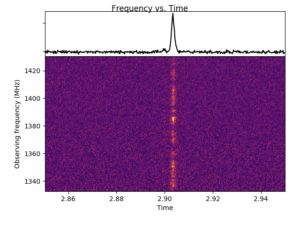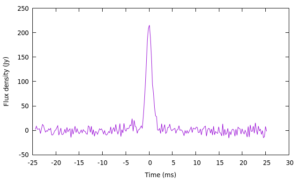2022
Observations in 2022
The year 2022 stated with an upgrade of the receiver. We received a generous donation of two excellent low noise amplifiers from the California Institute of Technology which substantially improved our sensitivity. At the same time, we made some changes in the RF chain which will facilitate further enhancements going forward.
After completion of the upgrade the main focus was the observation of the FRB20201124A which underwent another activity period. Many of these observations were coordinated with other telescopes in Westerbork (The Netherlands), Onsala (Sweden) and Torun (Poland).
A further Fast Radio Burst, FRB20220912A could be observed in autumn. This was after the CHIME telescope in Canada reported enhanced activity from this source. We were the first telescope to confirm emission from this source, which led to the publication of an Astronomers Telegram: https://www.astronomerstelegram.org/?read=15691. Subsequent observation followed which were then coordinated with our cooperation partners. This led to subsequent Astronomers Telegrams: https://www.astronomerstelegram.org/?read=15727 and https://www.astronomerstelegram.org/?read=15817.
Besides the observation of Fast Radio Bursts we continued our long term monitoring of OH masers.


